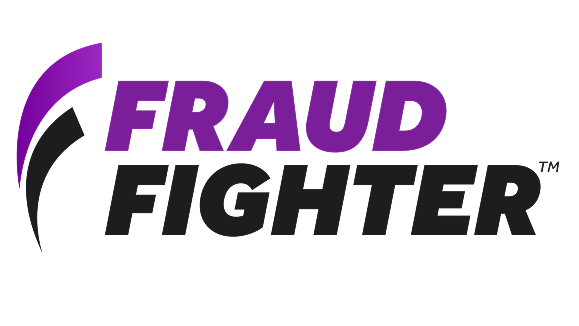
• TABLE OF CONTENTS •
Consumer Behavior during the Holidays
Holiday 2015 Retail Stats Review
Holiday 2016 Retail Forecast
Holiday Fraud Issues
Holiday Fraud Prevention Tips
The holiday season is upon us! For most retailers, the holiday shopping season starts Thanksgiving weekend and runs until the end of December – and it’s this shopping season in which retailers will bring in the most revenue. Unfortunately, it is also during this shopping season that retailers are most vulnerable to fraud.
Consumer Behavior during the Holidays
As you’d expect, most holiday shoppers – 75% of them – do not complete their holiday shopping until sometime in December, and 35% of all shoppers do not finish until the last 2 weeks before Christmas.
Traditionally, 2 out of every 5 consumers start their holiday shopping in September or October. 2 out of every 5 consumers start their holiday shopping sometime in November. And the rest start and finish their holiday shopping in the month of December.
Interestingly, the post-holiday shopping season is becoming more and more popular, with 2 out of 3 shoppers planning on hitting up after-Christmas sales. Although sales aren’t as high during the week between Christmas and New Year’s Day as compared to the rest of the holiday season, that week had the heaviest consumer traffic in 2015.
“The post-Christmas market is as important – if not more than – as the Black Friday weekend, as we saw the highest traffic patterns of the season over the New Year’s weekend.”
– Michele Dupré, Group Vice President of Retail, Hospitality, and Distribution, Verizon Enterprise Solutions
For the past several years, Black Friday has been the most favored shopping day by holiday shoppers. In fact, some retailers can expect Black Friday sales to make up more than two-thirds of their total holiday sales.
However, with more and more people getting comfortable using technology for monetary transactions, Cyber Monday is quickly becoming the most favored shopping day by online – aka e-commerce – holiday shoppers. In 2015, approximately 35% of consumers made more than 50% of their holiday purchases online. But Black Friday still remains a key online shopping day for holiday consumers: 25% of retailers reported that they saw more online sales on Black Friday than Cyber Monday.
Gift cards are quickly becoming the most popular item to purchase during the holiday season. In addition to being a convenient gift, gift cards are also seen as being more secure for online transactions than debit/credit cards for holiday purchases: "Millennials, sensitive to cyber security issues and identity fraud, often see gift cards as a solution.” During the 2015 holiday shopping season, 63% of holiday shoppers purchased at least one gift card."
Most consumers use either their debit or credit card for transactions, whether in-store or online. Overall, 52% of consumers have used a credit card to make a holiday purchase and 51% of consumers have used a debit card to make a holiday purchase. PayPal as a payment online is gaining popularity, with 36% of consumers revealing that they have used PayPal to make a holiday purchase; 49% of retailers say that they are able to accept PayPal as a form of payment.
Statistically, consumers still heavily favor in-store shopping as opposed to online shopping – about a sixth of total holiday sales are made online. In terms of purchase amount per transaction, consumers tend to spend more online than in-store: consumers spend, on average, $91 per transaction online (an average of $114/transaction is spent via desktop; an average of $89/transaction is spent via tablet; an average of $70/transaction is spent via smartphone) while spending just $80 per transaction in-store. Of course, many more transactions are conducted in-store than online.
Holiday 2015 Retail Stats Review
As a note: when it comes to analyzing consumer behavior during the holidays, most surveys and research firms define the holiday shopping season as November 1 – December 31.
A comparison of the 2014 holiday shopping season and the 2015 holiday shopping season revealed that holiday sales grew 3% to $626.1 billion. Online sales, meanwhile, grew by a whopping 21%.
About 70% of retailers reported an increase in holiday sales when comparing 2014 with 2015 - 81% of those retailers reported an increase in their online holiday sales and a little over 50% of those retailers reported an increase in their in-store holiday sales.
Although desktop sales was still the dominant sales channel online during the holidays, mobile sales (sales made via tablet or smartphone) - as a percentage of total online sales - increased from 25.9% in 2014 to 30.4% in 2015.
Sales made via smartphone made a large gain in 2015 to making up 19.9% of total online sales; in 2014, smartphone sales only made up 14% of total online sales.
Black Friday was the best sales day for retailers during the 2015 holiday shopping season, with an estimated 68% of total holiday sales being made that day. The biggest online sale day for the desktop channel was Cyber Monday, totaling $2.04 billion in sales.
Each consumer, on average, spent about $952.58 during the 2015 holiday season on holiday items, such as gifts for others, non-gifts, food, decorations, flowers, and greeting cards.
Holiday 2016 Retail Forecast
As a note: as mentioned above, for analytical purposes, the holiday shopping season is defined as November 1 – December 31.
Holiday sales for 2016 are expected to increase by 3.6 percent to $655.8 billion. Online sales are expected to increase by 7-10% to $117 billion.
Each year, the number of individual days that brings in at least $1 billion in total sales during the holiday season increases; this holiday season, at least 57 days are expected to bring in $1 billion in sales each.
For the first time ever, Cyber Monday sales is expected to surpass Black Friday sales, making Cyber Monday the biggest sale day of the entire year. The following days are expected to be the biggest individual sales days during the 2016 holiday season:
• Cyber Monday = $3.36 billion
• Black Friday = $3.05 billion
• Giving Tuesday = $2.12 billion
• Thanksgiving Day = $2 billion
• Green Monday = $2 billion
It is predicted that each holiday shopper will spend, on average, $935.58, with $588.90 of that being spent on gifts for family, friends, and co-workers.
Although there amount of sales conducted in-store is still much higher than the amount of sales conducted online, most consumers plan on splitting their holiday shopping between in-store and online:
• 56.6% of consumers plan on shopping in a department store
• 56.5% of consumers plan on shopping online
• 55.7% of consumers plan on shopping in a discount store
• 44.5% of consumers plan on shopping in a grocery store/supermarket
• 33.6% of consumers plan on shopping in a clothing/accessories store
Even though consumers will be making the bulk of their purchases in-stores, an estimated 92% of holiday consumers will at least research potential holiday purchases online first whether making those purchases in-store or online.
Another first for 2016: mobile (smartphone + tablet) traffic is predicted to surpass desktop traffic, although it is also predicted that consumers will still spend more in total via desktop than mobile. Sales via mobile channels are expected to make up 34% of total online holiday sales in 2016.
According to a National Retail Federation survey:
• 40.6% of consumers plan on starting holiday shopping before November
• 41.4% of consumers plan on starting holiday shopping during November
• 15% of consumers plan on starting holiday shopping during the first 2 weeks of December
• 3% of consumers plan on starting holiday shopping the week before Christmas
An estimated 137.4 million individuals are expected to shop over Thanksgiving weekend this year. 74% of those consumers plan on shopping on Black Friday. 46.7% of the consumers planning on shopping over Thanksgiving weekend plan on shopping on Saturday and a little over half of those consumers say that they are shopping that day specifically for Small Business Saturday.
Holiday Fraud Issues
“Retail fraud comes in many shapes and sizes and is especially rampant during the holiday season when online and in-store traffic grows significantly.”
The following are the most prevalent fraud issues facing retailers during the holidays:
Counterfeit Money
Just a few days ago, the U.S. Secret Service successfully conducted an operation that resulted in the seizure of $30 million in counterfeit dollars – the largest operational seizure of counterfeit cash in the history of the Secret Service. As a retailer, it is more important than ever to have counterfeit cash detection and prevention measures this holiday shopping season.
30% of retailers revealed that they have noticed an increase in purchases made with counterfeit cash
Debit/Credit Card Fraud
It’s unnerving, but in 2015, losses to credit card fraud totaled $16.31 billion globally, and the United States alone incurred 48.2% of that loss. In other words, businesses lost a total of $7.86 billion to fraud in one year alone.
Debit/Credit card fraud is an issue businesses have to battle on two fronts: in-store and online. Thanks to EMV, in-store debit/credit card fraud should be slowing down, but online debit/credit card fraud – known as card-not-present fraud – is growing at an alarming rate. Card-not-present fraud is discussed below.
Card-not-present Fraud
Card-not-present fraud, or CNP fraud, is quickly becoming a favorite method of fraud amongst criminals. According to a report by Forter, an antifraud firm, between 2015 and 2016, CNP fraud rose by 137%, with the largest rate of growth occurring in the last quarter of 2015 – in other words, during the holiday shopping season – with 27% more fraud occurring during that quarter than the other three quarters.
“Ninety percent of the rise in online fraud in the last year can be explained by EMV alone. This is not a surprise. It happened in every market where EMV was implemented. Fraudsters are very creative and very attentive. They knew EMV was coming. We monitor a lot of the sites on the dark Web where fraudsters congregate and share information. We saw more than a year ago a lot of new people come into those forums who used counterfeit cards, and who knew they would not be able to do so for long, asking how to commit fraud online. The more people who join those circles of crime asking those questions, the more crimes will be attempted.”
– Michael Reitblat, Forter CEO
The most worrisome about the rise in CNP fraud is the fact that botnets – computers that have been instructed, likely by a virus, to automatically perform tasks on the Internet, such as sending spam, all without the computer owner’s knowledge – are being used more and more to commit this fraud. During the first quarter of 2016, an estimated 80% of all CNP fraud attempts were conducted by botnets.
Gift card fraud
Gift card fraud goes hand-in-hand with debit/credit card fraud: gift card fraud is when a counterfeit debit/credit card is used to purchase a gift card. Gift card fraud has become such an issue for some retailers that some, such as Safeway, have stopped selling certain gift cards altogether. As a product, gift card purchases via a counterfeit debit/credit card have the highest fraud attempt rate than any other product.
Return/Receipt Fraud
It’s no surprise that retailers’ return departments are incredibly busy during the post-holiday rush. And fraudsters know this, too, which is why return fraud – the return of stolen merchandise, usually accompanied by a fake receipt – increases during this period, when workers are busy trying to emolliate the crowds waiting to make legitimate returns.
“Return fraud remains a critical issue for retailers with the impact spanning far and wise, in-store and online.”
– Bob Moraca, NRF Vice President of Loss Prevention
During the post-holiday season, approximately 3.5% of returns are fraudulent, costing retailers $2.2 billion.
In general, 91.9% of retailers experience the return of stolen merchandise throughout the year, not just during the holidays.
Another type of return fraud that retailers need to keep an eye out for is ‘wardrobing’. This type of return fraud involves the return of used, but non-defective merchandise, such as an expensive camera that was used to take graduation pictures. An estimated 72.6% of retailers experience wardrobing throughout the year.
Yet another type of return fraud retailers need to be able to address is e-receipt fraud, which is essentially the return of merchandise that seems to have been purchased online due to the accompaniment by an e-receipt – there is a good chance the merchandise was simply stolen off the shelves. The amount of retailers experiencing e-receipt fraud as nearly doubled this year from last year – from 18.2% to 33.9%.
Buy online & Pick-up In-store Fraud
More and more retailers these days are offering the service of having merchandise that is ordered online available for pick-up in-store – as opposed to having the merchandise shipped to customers’ houses. Consumers find such a service convenient since they can obtain the merchandise faster than if they had waited for it to be shipped to their homes.
In general, this mode of delivery has the highest fraud attempt rate than any other mode of delivery: between 2014 and 2015, pick-up in-store fraud increased 47%.
Next Day/Overnight Delivery
Although next day/overnight delivery goes hand-in-hand with CNP fraud, it deserves to be mentioned as this mode of delivery currently has a faster rate of fraud attempt growth than even pick-up in-store fraud, with an increase of 50% between 2014 and 2015.
According to data released by ACI Worldwide, “the 2015 holiday shopping season saw fraud attempts rise, with rates soaring on key dates.”
2015 Holiday Shopping Dates the Most Fraud was Attempted
1) Christmas Eve = 2.4% of transactions were fraud attempts
2) Thanksgiving = 2% of transactions were fraud attempts
3) Black Friday = 1.8% of transactions were fraud attempts
4) Holiday Shipment Cut-Off Days (ex: Order by Today to Receive by Christmas) = 1.6% of transactions were fraud attempts
A comparison between November 27, 2014 (Thanksgiving) – December 31, 2014 and November 26, 2015 (Thanksgiving) – December 31, 2015 revealed that fraud attempts had grown by 8% on average. In 2014, 1 out of every 72 transactions was a fraudulent attempt; in 2015, 1 out of every 67 transactions was a fraudulent attempt.
Even with fraud growing, especially during the holidays, retailers cannot tighten up their loss prevention security without inconveniencing their innocent, legitimate customers. It’s a balancing act that retailers are going to have to analyze and refine in the years to come, especially with the changing landscape of sales – with a greater portion overall sales continually shifting to the online environment.
“When it comes to retail fraud, retailers can build taller walls, but criminals continue to find taller ladders.”
The following are some tips that your business can implement this holiday season to prevent fraud from eating away at your hard-earned profits.
Holiday Fraud Prevention Tips
First and foremost, the most important action you and your team can be taking this holiday season to combat fraud is to check I.D.s, namely driver’s licenses, when customers are paying with either a debit card or a credit card. Although it is possible that fraudsters have counterfeit I.D.s that match the data on a counterfeit debit/credit card, it is best to make sure that they have both on the chance that they do not have matching identification.
In addition, I.D.s have many more security features on them than payment cards do, making it harder for criminals to duplicate correctly, and therefore easier to spot counterfeit I.D.s.
When customers are paying with cash, make sure your employees know to take the time to check out any suspicious bills by making sure security features are present and correct. The Federal Reserve Board has a great website dedicated to informing the public on the security features found on the different U.S. currency denominations – check it out by clicking here.
As mentioned above, prevention fraud, especially during the holidays is a balancing act:
“Retailers have the difficult task of providing superior customer service by always giving the benefit of the doubt to their shoppers when it comes to return, while simultaneously working to make sure they protect their business assets. We expect retailers to continue their tried and true ways of combating fraud through increased usage of identification verification, as well as seeking new and innovative approaches on the back end.”
– Bob Moraca, NRF Vice President of Loss Prevention
And as retailers are well aware, this balancing act is becoming ever more precarious for their online transactions. Each year that goes by, the proportion of a retailer’s online sales overtakes a bigger and bigger slice of the retailer’s overall sales – and with it, up goes the amount of fraud that the online sales channel brings in.
As explained a couple of sections above, EMV has been a driving force in reducing in-store fraud, but drastically increasing the amount of online fraud: “Ninety percent of the rise in online fraud in the last year can be explained by EMV alone.”
To battle the increase in online fraud, retailers will have to get creative in determining the types of fraud prevention that will not interfere with a customer’s overall satisfaction with their shopping experience:
“Merchants must implement a sophisticated multi-layered multi-dimensional approach to fraud prevention for all transaction channels.”
– Mike Braatz, senior vice president, Merchant Risk Solutions, ACI Worldwide







.png)
